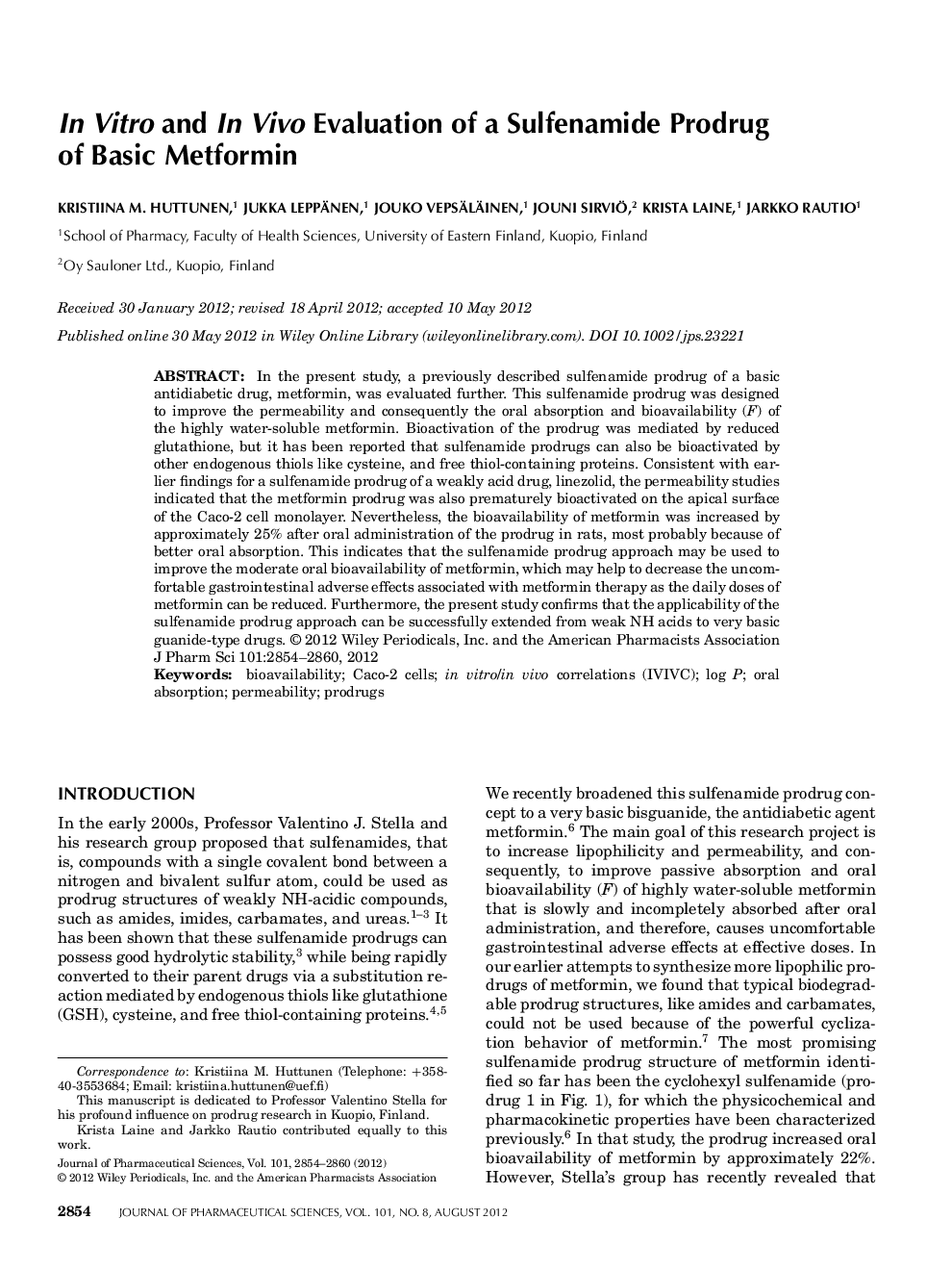| Article ID | Journal | Published Year | Pages | File Type |
|---|---|---|---|---|
| 10162800 | Journal of Pharmaceutical Sciences | 2012 | 7 Pages |
Abstract
In the present study, a previously described sulfenamide prodrug of a basic antidiabetic drug, metformin, was evaluated further. This sulfenamide prodrug was designed to improve the permeability and consequently the oral absorption and bioavailability (F) of the highly water-soluble metformin. Bioactivation of the prodrug was mediated by reduced glutathione, but it has been reported that sulfenamide prodrugs can also be bioactivated by other endogenous thiols like cysteine, and free thiol-containing proteins. Consistent with earlier findings for a sulfenamide prodrug of a weakly acid drug, linezolid, the permeability studies indicated that the metformin prodrug was also prematurely bioactivated on the apical surface of the Caco-2 cell monolayer. Nevertheless, the bioavailability of metformin was increased by approximately 25% after oral administration of the prodrug in rats, most probably because of better oral absorption. This indicates that the sulfenamide prodrug approach may be used to improve the moderate oral bioavailability of metformin, which may help to decrease the uncomfortable gastrointestinal adverse effects associated with metformin therapy as the daily doses of metformin can be reduced. Furthermore, the present study confirms that the applicability of the sulfenamide prodrug approach can be successfully extended from weak NH acids to very basic guanide-type drugs. © 2012 Wiley Periodicals, Inc. and the American Pharmacists Association
Keywords
Related Topics
Health Sciences
Pharmacology, Toxicology and Pharmaceutical Science
Drug Discovery
Authors
Kristiina M. Huttunen, Jukka Leppänen, Jouko Vepsäläinen, Jouni Sirviö, Krista Laine, Jarkko Rautio,
